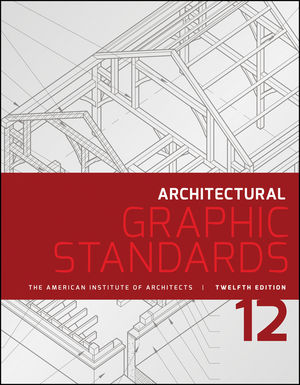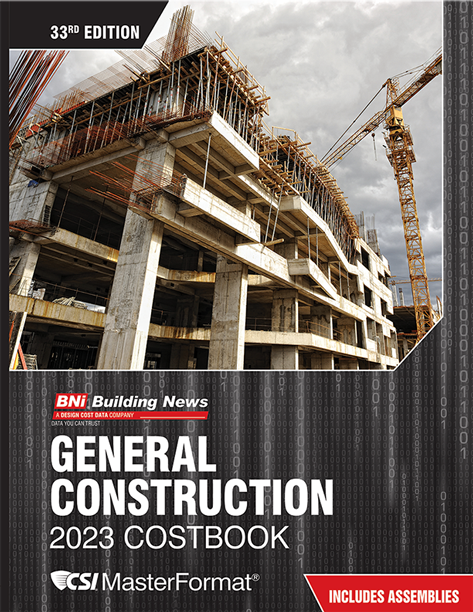As material and manufacturing technologies evolve, so must the standards that are used to ensure that the products selected represent the specifier's intentions and provide what the consumer has paid for. Even when there are only a few products in a family of materials, such as gypsum panel products, keeping all of the relevant standards up to date is a daunting chore. One reason for this is that ASTM standards reference related materials and their respective application and testing standards. For instance, the soon-to-be-replaced ASTM C 36, "Standard Specification for Gypsum Wallboard," a relatively simple material standard, references the following other ASTM standards:
• C 11, "Terminology Relating to Gypsum and Related Building Materials and Systems"
• C 473, "Test Methods for Physical Testing of Gypsum Panel Products"
• C 645, "Specification for Nonstructural Steel Framing Members"
• C 840, "Specification for Application and Finishing of Gypsum Wallboard"
• C 1264, "Specification for Sampling, Inspection, Rejection, Certification, Packaging, Marking, Shipping, Handling and Storage of Gypsum Board"
• E 84, "Test Method for Surface Burning Characteristics of Building Materials"
• E 96, "Test Methods for Water Vapor Transmission of Materials"
• E 119, "Test Methods for Fire Tests of Building Construction and Materials"
The impact of a modified standard
A modification in a referenced standard may affect the originally mentioned standard (C 36). For example, a change in the C 840 standard could impact the development of a new gypsum board product. Since a standard referenced by a product can also be impacted by changes to standards that it references, one can easily see that as more products are brought to the market, each with its own material standard, which is then cross-referenced to all the related standards, keeping all the individual standards current is an almost impossible task.In 1999, the gypsum industry began phasing in ASTM C 1396, "Standard Specification for Gypsum Board." The new standard was designed to replace nine existing ASTM specifications, leaving one reference standard for all gypsum board products. Until the publication of ASTM C 1396, each gypsum board product was covered by following separate ASTM specifications:
• C 36, "Standard Specification for Gypsum Wallboard"
• C 37, "Standard Specification for Gypsum Lath"
• C 79, "Standard Specification for Treated Core and Nontreated Core Gypsum Sheathing Board"
• C 442, "Standard Specification for Gypsum Backing Board, Gypsum Coreboard, and Gypsum Shaftliner Board"
• C 588, "Standard Specification for Gypsum Base for Veneer Plaster"
• C 630, "Standard Specification for Water-Resistant Gypsum Backing Board"
• C 931, "Standard Specification for Exterior Gypsum Soffit Board"
• C 960, "Standard Specification for Predecorated Gypsum Board"
• C 1395, "Standard Specification for Gypsum Ceiling Board"
ASTM C 1396 did not make any technical changes to the individual specifications, the intent was to combine the individual specifications under a single "umbrella" specification and simplify maintenance of the standard. Each of the predecessor standards contained a reference list similar to the first set of standards shown above, with considerable overlap in those cited standards. And each of the older standards was revised on a schedule different from the others. The use of a single umbrella specification eliminates inadvertent inconsistencies between the requirements for individual products that result from staggered document revision schedules.
An industry phase-in program included a period during which product labels and literature reflected both the new ASTM C 1396 and the extant ASTM specification for the specific product. For the past five years, building professionals have seen dual labeling while the industry worked to update all of the relevant codes and standards referencing ASTM specifications for gypsum board products. The period of dual labeling was intended to give the industry time to educate specifiers on the need to use ASTM C 1396 instead of the existing specifications. After five years, the final phase of the transition has begun with the withdrawing of the stand-alone specification documents.
Each of the older standards is currently being balloted for withdrawal in its ASTM committee. The ballots will both begin the process of removing the deprecated standards from use and notify those organizations that reference these standards in other publications that their publications require updating. The balloting process typically requires several cycles before all voting is concluded. When the balloting process is complete, the older specifications will be removed from circulation and all gypsum board materials will be labeled to reference only the C 1396 standard.
A related and most important standard is ASTM C 840, "Standard Specification for Application and Finishing of Gypsum Board," which has recently received an important revision. As the title suggests, this standard explains the proper procedures for installing and finishing many of the products covered in ASTM C 1396. Included in both the body of the document and one of the appendices are instructions on the levels of gypsum board finish.
Finish levels
This particular topic is often revisited by its governing committee because the finish of the surface is what is most critically evaluated at the end of the job. The levels range from 0 to 5; zero requiring no use of joint tape or joint compound at all and Level 5 requiring that all joints are taped using three layers of joint compound, all fastener heads are similarly treated, and a skim coat of either joint compound or a material specifically designed for the purpose is applied over the entire surface.Levels 1 through 4 each specify continually increasing amounts of joint compound, with each higher level requiring fewer irregularities in the finish. For instance, an area that is not seen by the public, such as above a suspended ceiling, but requiring "fire taping" necessitates a Level 1 finish, which is a layer of tape embedded in a single coat of joint compound where no sanding is necessary, and tool marks are acceptable. Levels 4 and 5 must be sanded smooth so that they are "paint ready."
In previous versions of ASTM C 840, the section on the Levels of Finish, section 22 and appendix X8, included language that required Levels 3, 4, and 5 to be coated with a drywall primer. The reasoning for this requirement was sound: Many finish paints applied directly over unprimed surfaces had exhibited a variety of problems. Most of those problems related to the difference in absorbency between the paper facing of the wallboard and the joint compound used to cover the tape and the fastener heads. Requiring that such a surface first be primed before painting (or otherwise decorating) was a sensible step in avoiding those problems.
However, one of the unintended consequences of this requirement was that, as worded, in some regions of the country, drywall finishing contractors were now expected to leave a primed surface before the decorating contractor began work. This added unexpected costs and responsibility on tradesmen who were neither inclined nor qualified to perform the work of another trade. Either the drywall finisher had to attempt the work himself or subcontract it to someone before he could get his work approved. Additionally, using the term "drywall primer" as a universal product failed to take into account that not all finish products are going to perform as expected over just any drywall primer. Without knowing what the intended finish is to be, this step could in fact be counter productive. Clearly, this was not the intent of the specification.
So, after several rounds of balloting, ASTM C 840 was modified to correct this predicament. The language in section 22 and appendix X8, that stated that Levels 3, 4 and 5 must include a coat of drywall primer, has been moved from those sections, to a new section 23, and retitled "Decoration." This removes the implied responsibility of applying the primer from the purview of the tradesman performing the drywall finishing, and places it in the purview of the decorating contractor. The instruction has also been modified so that the product used to prepare the surface for decoration is compatible with that final decoration.
In addition, since ASTM standards are not intended to define job trade responsibility, a note has been added following section 23:
"Note 15-It is not the intent of this specification to assign responsibility for performance to specific trades."
ASTM reinforces its position that it does not intend to prevent various trades from bidding on or performing certain tasks, since in different jurisdictions different trades may be permitted to perform different types of work.
While it is difficult to be up to date on the myriad standards and specifications that guide the design community, the code enforcement community, and the construction industry, being familiar with the changes in these two standards, ASTM C 1396 and ASTM C840, will go a long way toward simplifying matters for those communities in the months ahead. Soon, the nine standards superseded by C 1396 will no longer be in effect, so future specifications need to reflect this change to reduce the confusion that results from calling out a deprecated standard. And making sure to cite C 840-04 will ensure that the drywall finisher is not saddled with someone else's work.




Report Abusive Comment